Abstract
Cernik, A. A. (1974).British Journal of Industrial Medicine,31, 239-244. Determination of blood lead using a 4·0 mm paper punched disc carbon sampling cup technique. The method described is designed to overcome difficulties associated with presentation of the sample and its analysis for lead in blood. Chromium-51 studies on the effect of spread showed that imprecision resulted when discs of less than 4·0 mm diameter were punched from a given blood spot. The best standard deviation and relative standard deviation for increasing lead concentrations was obtained when 4·0 mm discs were used.
Small daily voltage variations to the carbon cup workhead required that the non-specific absorption should be controlled to 0·02 absorbance at the ashing step. The occurrence of a second non-atomic signal was not considered significant since it had a different volatilization temperature to lead.
Several advantages of the method are stated.
A comparison of 4·0 mm against 6·5 mm punched discs was investigated using 33 samples of blood ranging from 9·0 to 126 μg of lead per 100 ml blood. Correlation (r = 0·970) and regression lines are shown. Absolute sensitivity of the method was 25 × 10-12 g.
Full text
PDF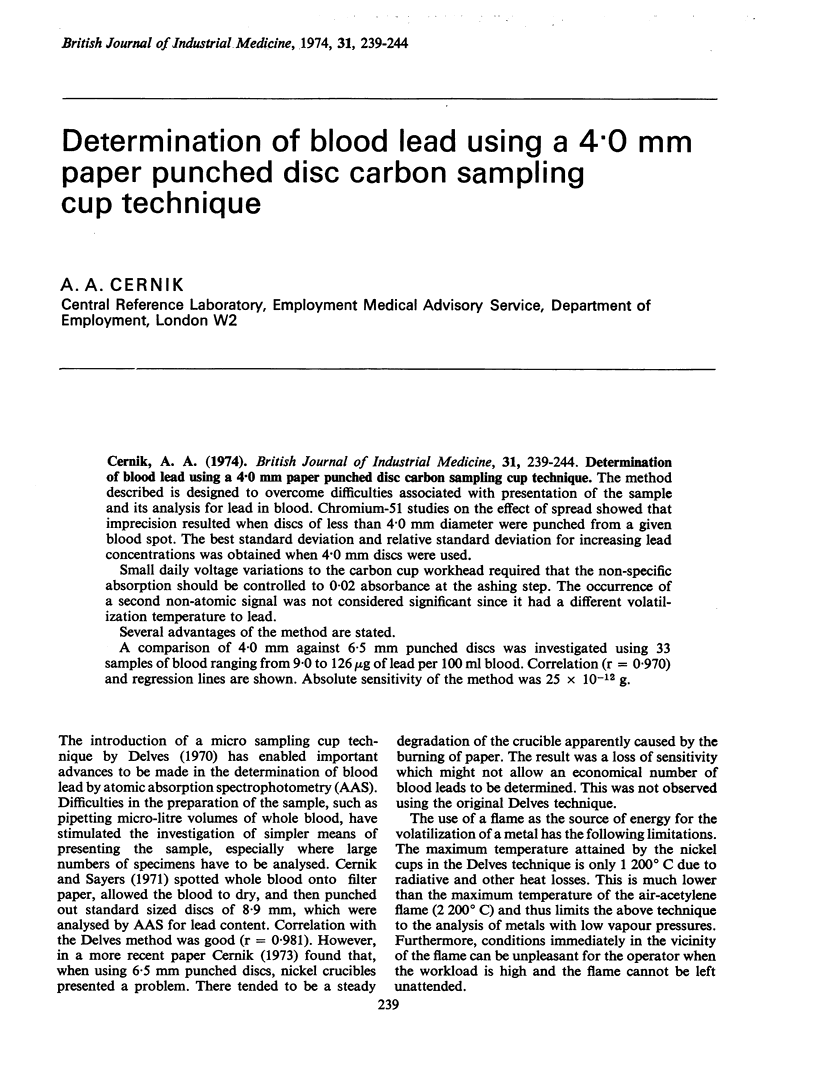
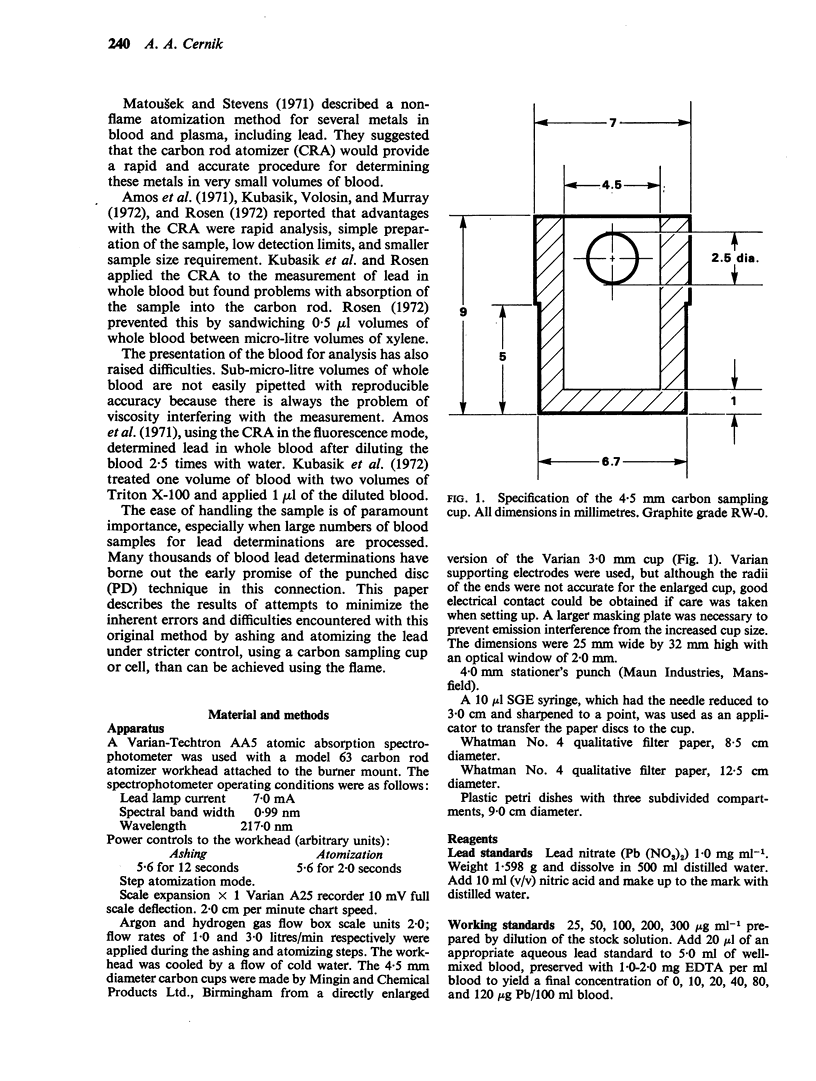
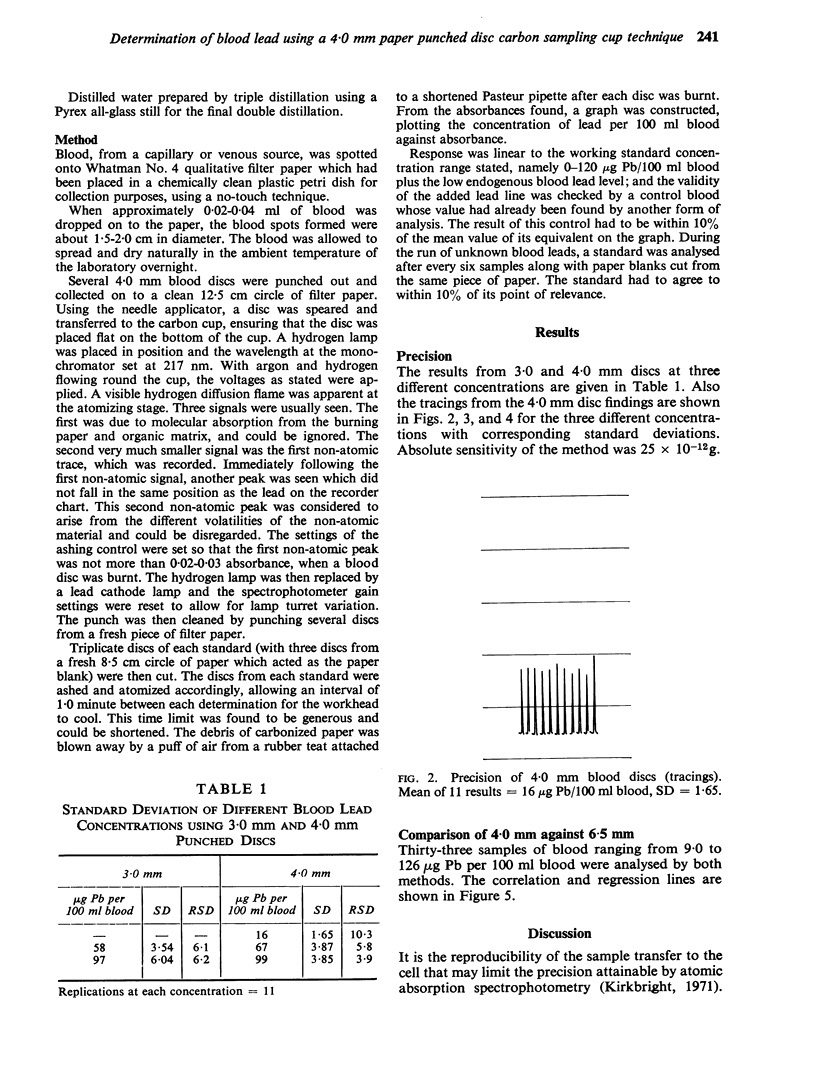
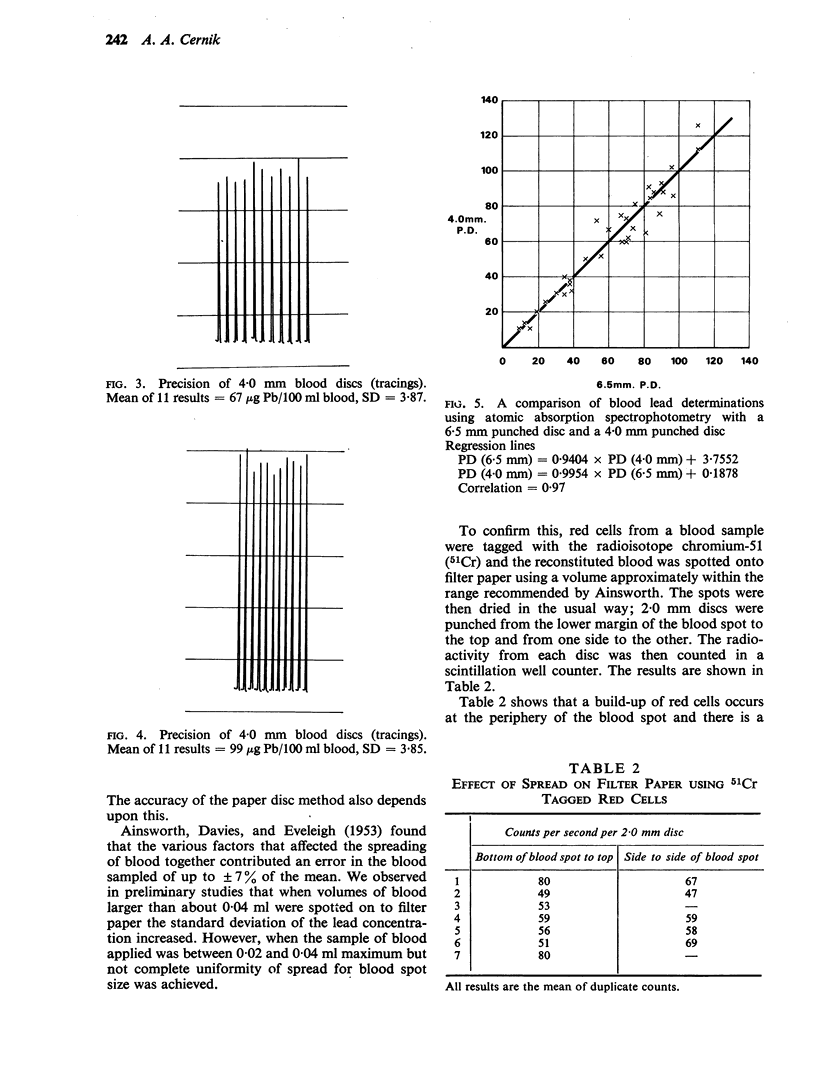
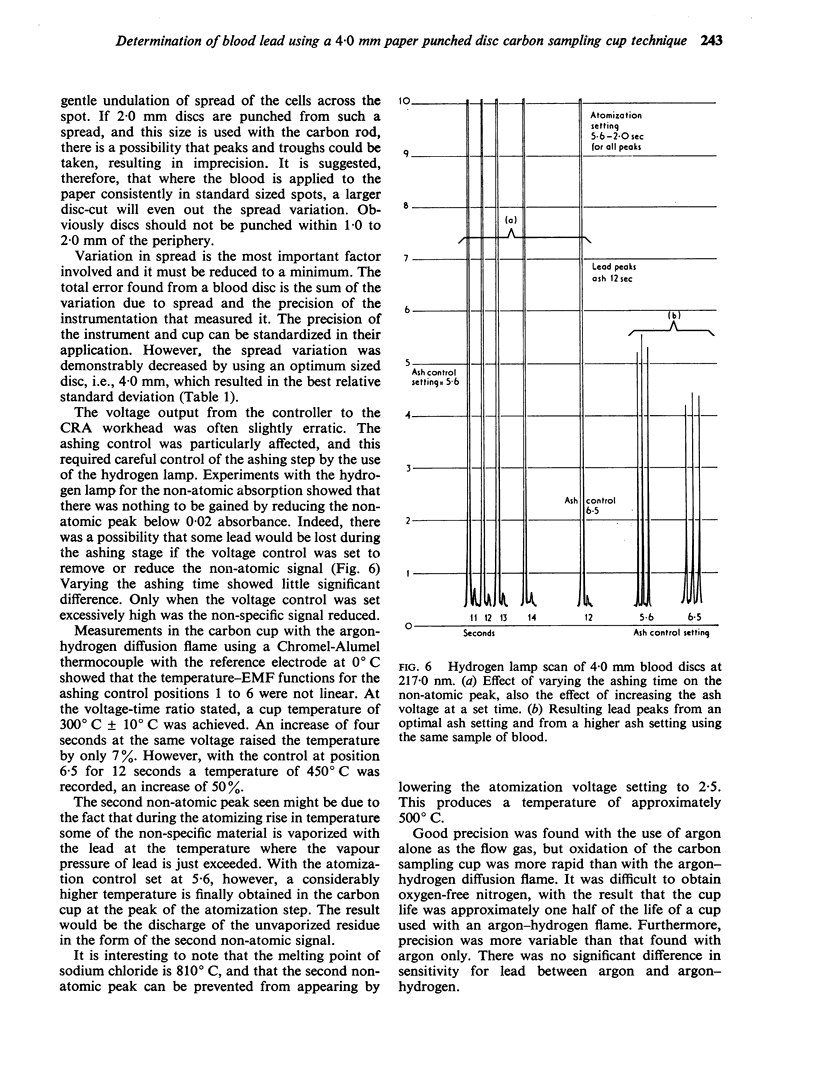
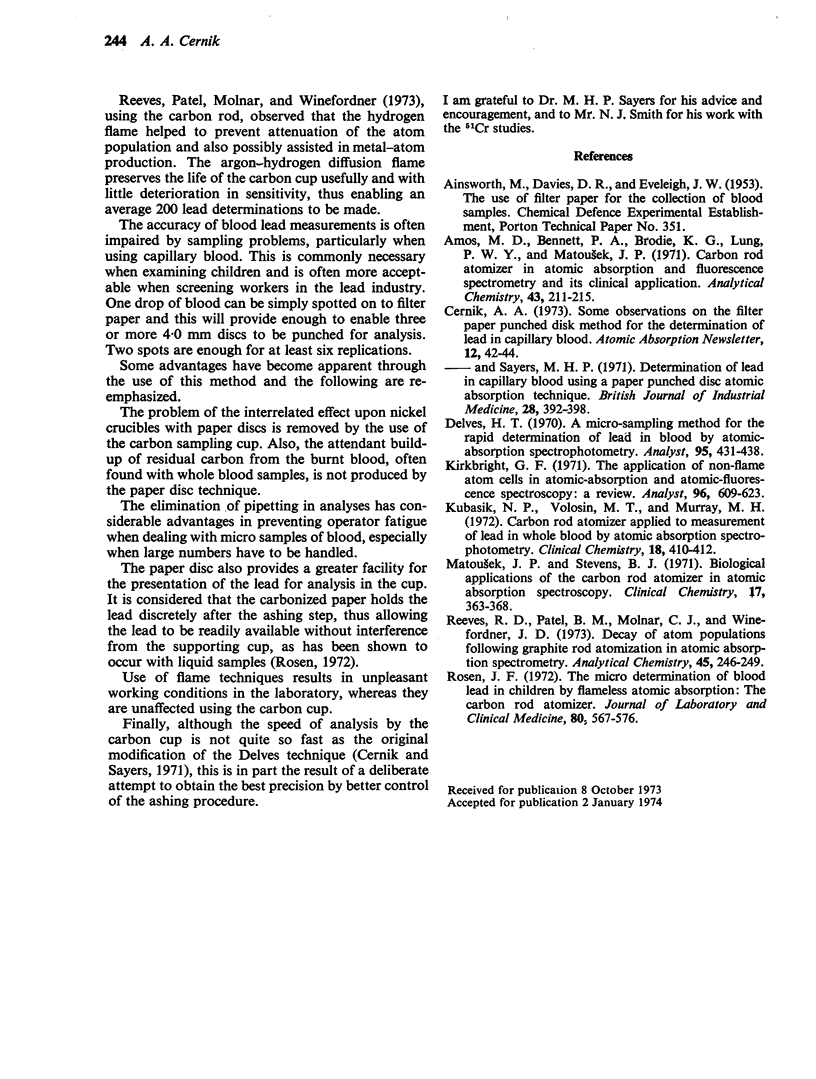
Selected References
These references are in PubMed. This may not be the complete list of references from this article.
- Cernik A. A., Sayers M. H. Determination of lead in capillary blood using a paper punched disc atomic absorption technique. Application to the supervision of lead workers. Br J Ind Med. 1971 Oct;28(4):392–398. doi: 10.1136/oem.28.4.392. [DOI] [PMC free article] [PubMed] [Google Scholar]
- Delves H. T. A micro-sampling method for the rapid determination of lead in blood by atomic-absorption spectrophotometry. Analyst. 1970 May;95(130):431–438. doi: 10.1039/an9709500431. [DOI] [PubMed] [Google Scholar]
- Kubasik N. P., Volosin M. T., Murray M. H. Carbon rod atomizer applied to measurement of lead in whole blood by atomic absorption spectrophotometry. Clin Chem. 1972 May;18(5):410–412. [PubMed] [Google Scholar]
- Matousek J. P., Stevens B. J. Biological applications of the carbon rod atomizer in atomic absorption spectroscopy. 1. Preliminary studies on magnesium, iron, copper, lead, and zinc in blood and plasma. Clin Chem. 1971 May;17(5):363–368. [PubMed] [Google Scholar]
- Rosen J. F. The microdetermination of blood lead in children by flameless atomic absorption: the carbon rod atomizer. J Lab Clin Med. 1972 Oct;80(4):567–576. [PubMed] [Google Scholar]


